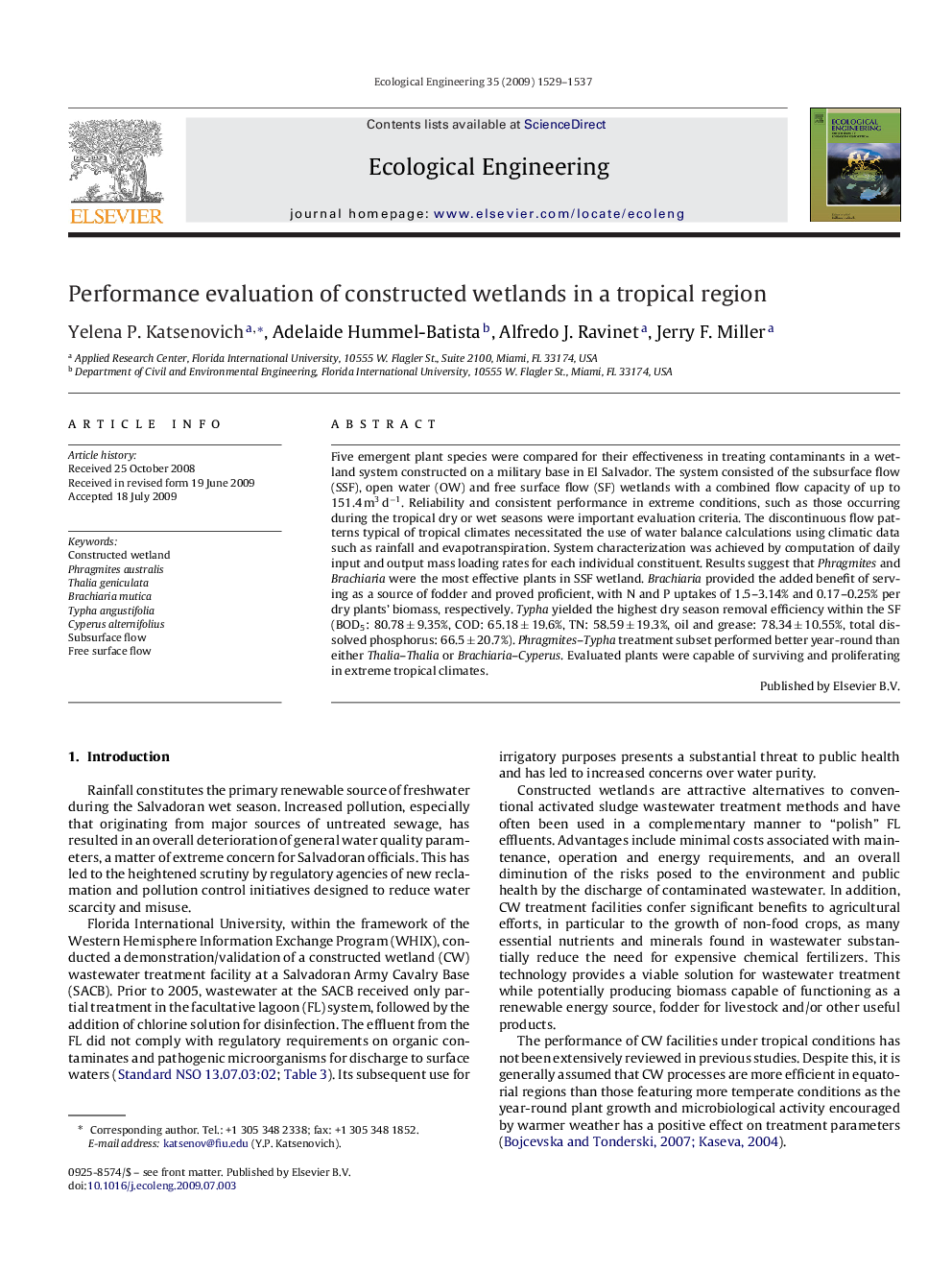| Article ID | Journal | Published Year | Pages | File Type |
|---|---|---|---|---|
| 4390731 | Ecological Engineering | 2009 | 9 Pages |
Five emergent plant species were compared for their effectiveness in treating contaminants in a wetland system constructed on a military base in El Salvador. The system consisted of the subsurface flow (SSF), open water (OW) and free surface flow (SF) wetlands with a combined flow capacity of up to 151.4 m3 d−1. Reliability and consistent performance in extreme conditions, such as those occurring during the tropical dry or wet seasons were important evaluation criteria. The discontinuous flow patterns typical of tropical climates necessitated the use of water balance calculations using climatic data such as rainfall and evapotranspiration. System characterization was achieved by computation of daily input and output mass loading rates for each individual constituent. Results suggest that Phragmites and Brachiaria were the most effective plants in SSF wetland. Brachiaria provided the added benefit of serving as a source of fodder and proved proficient, with N and P uptakes of 1.5–3.14% and 0.17–0.25% per dry plants’ biomass, respectively. Typha yielded the highest dry season removal efficiency within the SF (BOD5: 80.78 ± 9.35%, COD: 65.18 ± 19.6%, TN: 58.59 ± 19.3%, oil and grease: 78.34 ± 10.55%, total dissolved phosphorus: 66.5 ± 20.7%). Phragmites–Typha treatment subset performed better year-round than either Thalia–Thalia or Brachiaria–Cyperus. Evaluated plants were capable of surviving and proliferating in extreme tropical climates.
